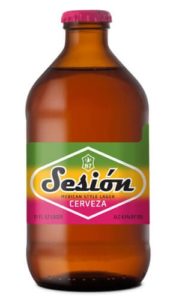Top 10 American Pilsners Brewed in North America
This Top Ten List of American Pilsners is from the results of the U.S. Open Beer Championship, Great American Beer Festival, and World Beer Cup. Light in body and color, American lagers are very clean and crisp and aggressively carbonated. Flavor components should be subtle and complex, with no one ingredient dominating the others. Malt sweetness is light to mild. Corn, rice, or other grain or sugar adjuncts are often used. Hop bitterness, flavor and aroma are negligible to very light. ABV: 4.10% – 5.10%. IBU: 5-14.

1. Sesión Cerveza – Full Sail Brewing – Oregon
2. Lemon Pils – Elk Horn Brewery – Oregon
3. Rocket 100 – The Austin Beer Garden Brewing – Texas
4. La Bit…Tibi – Amos Lager – Belgh Brasse – Quebec
5. Leinenkugel’s Original – Jacob Leinenkugel Brewing – Wisconsin
6. La Choby – Brick Works Brewing – Delaware
7. Full Sail Session Premium Lager – Full Sail Brewing – Oregon
8. Gold Leaf Lager – Devils Backbone Brewing – Virginia
9. Grain Belt Premium – August Schell Brewing – Minnesota
10. Captain’s Log Lager – Cameron’s Brewing – Ontario
History of American Pilsners
The American Pilsner emerged in the mid-19th century, heavily influenced by German and Czech immigrants who brought their brewing traditions to the United States. Originating from the classic European Pilsner style, developed in Plzeň, Czech Republic in 1842, American Pilsners adapted to local ingredients and tastes. Brewers like Frederick Miller and Adolphus Busch capitalized on the influx of German immigrants, who craved the crisp, golden lagers of their homeland. By the late 1800s, beers like Budweiser and Miller High Life became iconic, brewed with American barley and corn or rice as adjuncts to create a lighter, more refreshing profile than their European counterparts. These beers were fermented at cooler temperatures using bottom-fermenting yeast, a technique perfected in Europe, and their mass production was enabled by advancements in refrigeration and rail transport, making them widely accessible across the growing nation.
By the early 20th century, American Pilsners dominated the beer market, particularly during Prohibition’s aftermath, when large-scale breweries rebuilt their empires by focusing on affordable, consistent lagers. The style’s light body, mild hop bitterness, and clean finish appealed to a broad audience, cementing brands like Coors and Pabst Blue Ribbon as household names. However, the rise of industrial brewing led to a homogenization of the style, with many craft nuances lost to cost-cutting measures. The craft beer revolution of the late 20th and early 21st centuries sparked a revival of “pre-Prohibition” Pilsners, with breweries like Victory and Firestone Walker reintroducing fuller-bodied, hoppier versions that harkened back to the original immigrant recipes. Today, American Pilsners span both the mass-produced, light lagers and artisanal interpretations, reflecting a balance between tradition and innovation in American brewing culture.
Top 10 Beers in America – Ales Lagers Specialty Barrel Aged